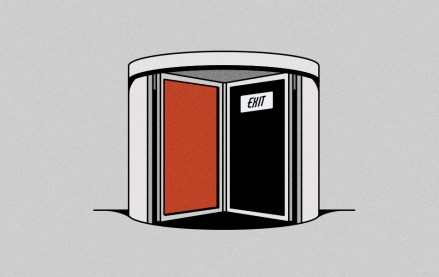
This article is a WTF explainer, in which we break down media and marketing’s most confusing terms. More from the series →
The sexiest buzzword in retail right now isn’t granny-chic or boyfriend jeans. It’s a mashup of athletic and leisure clothing called “athleisure.”
While Lululemon is credited with making this casual, athletic-inspired way of dressing mainstream at the beginning of the millennium, other brands and designers have more recently picked up on the trend.
Dick’s Sporting Goods just announced the opening of two new, female-focused apparel and footwear stores under its Chelsea Collective stores. Kate Spade also announced an expansion into the space through a partnership with Beyond Yoga in Spring 2016. Don’t expect the yoga pant trend to enter its Savasana phase any time soon.
Here’s everything you need to know about athleisure:
WTF is athleisure?
It’s a portmanteau of two seemingly opposite words, athletic and leisure, which both the media and fashion industry have adopted to describe the ubiquity of leggings, tank tops and sneakers in everyday wear.
“Sneakers today are wardrobe necessities today the way handbags once were,” said Martin McNulty, CEO of agency Forward3d.
This is really just about people wanting to wear sweatpants everywhere, isn’t it?
Sort of. Athleisure reflects a larger shift in society, where people are not only adopting healthier lifestyles but also looking for more comfort and functionality in their clothing. Social media hasn’t hurt its spread, either.
“I attribute it to the prevalence of information because of digital media,” said Steve White, vp of commerce strategy at Razorfish. “Lookbooks, influencers, bloggers and Pinterest have all expanded the definition of fashion and made it more personalized.”
Is the industry just trying to find a way to charge more for tights, or what?
Totally. You can get Lululemon leggings for $90, a designer pair for $400, and everything in between. Athleisure is being adopted feverishly by sports retailers, fast retailers and designers alike. From Gap to Chanel to Kate Spade, traditional sports brands are making practical athletic gear more fashionable while luxury designers are making their clothes more casual and accessible.
Are shoppers actually on board?
Yes. This style isn’t only limited to soccer moms and millennials. People rock their athleisure wear everywhere from spin or yoga class to boardroom meetings and even cocktail hours. According to market research firm NPD, almost half the people that buy activewear these days, buy it for non-active use, as casual and everyday wear.
No wonder, then, that Nike CEO Mark Parker made this proclamation at the Women’s Innovation summit in New York City last fall: “Leggings are the new denim.”
Is this a fashion trend or a hallmark of the End Times?
It’s not a mere trend. Athleisure could be an arena of growth for the retail industry in a competitive environment. According to market-research firm Euromonitor International, U.S. sales of sportswear, including performance, outdoor and “sports-inspired” clothing and shoes, grew by 7.8 percent to almost $91 billion last year, 27 percent more than what it was in 2007.
But while the numbers look promising now, the category may have already peaked, according to experts.
“It seems like it’s a saturated category to enter into when there are already a lot of incumbent players,” said Sucharita Mulpuru, analyst at Forrester Research.
Oh, well. Back to jorts?
More in Marketing

Pitch deck: How Amazon is recasting Twitch as a core part of its CTV pitch
Amazon is positioning Twitch as a defining asset in its CTV ambitions.

Netflix transforms former mall department stores into experiential venues
The location in Dallas opens this week, and one at the King of Prussia mall near Philadelphia opened last month.

Future of Marketing Briefing: AI has created a new talent paradox in programmatic agencies
The job isn’t execution anymore. AI handles that. The job is judgement.





